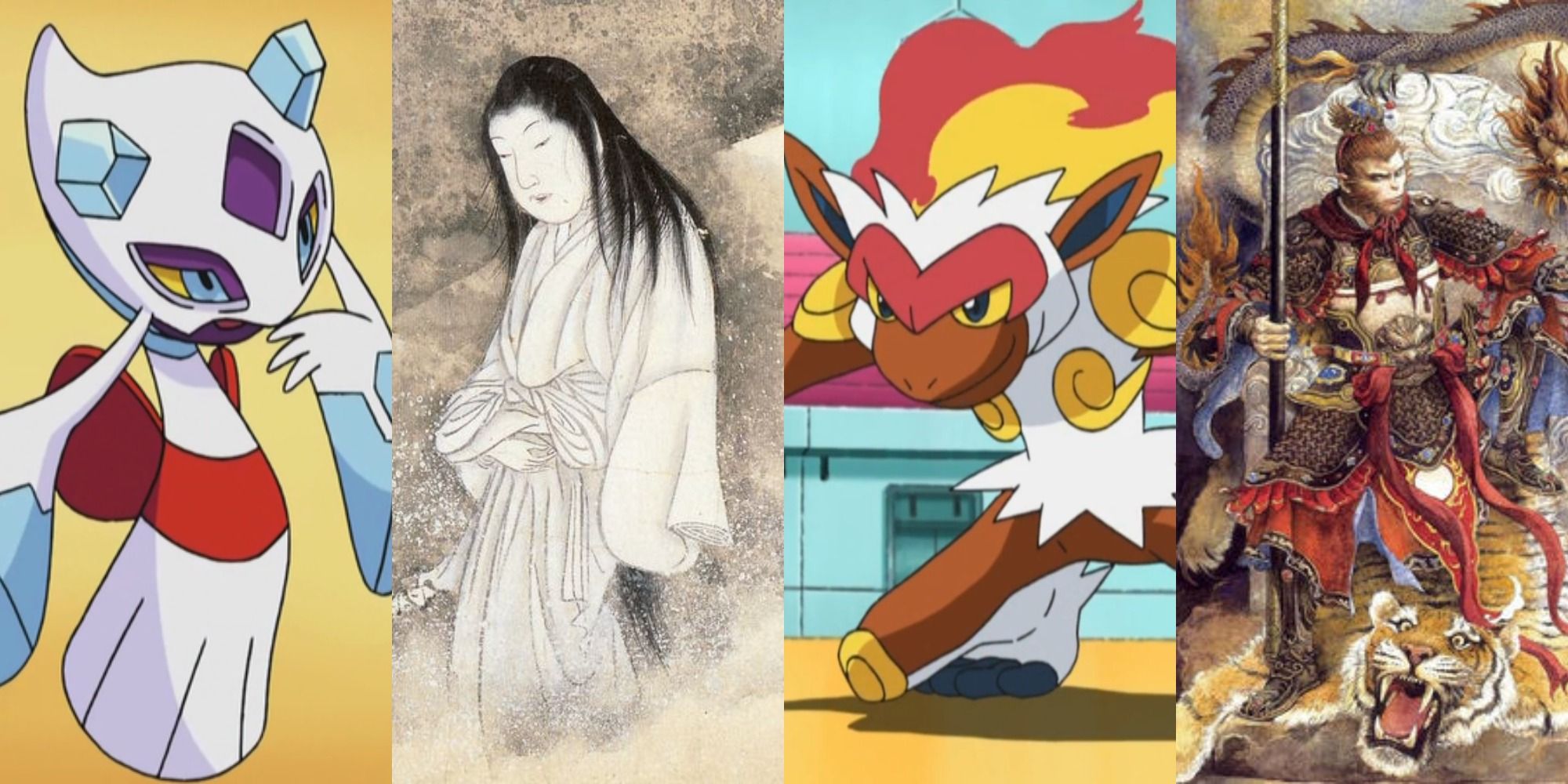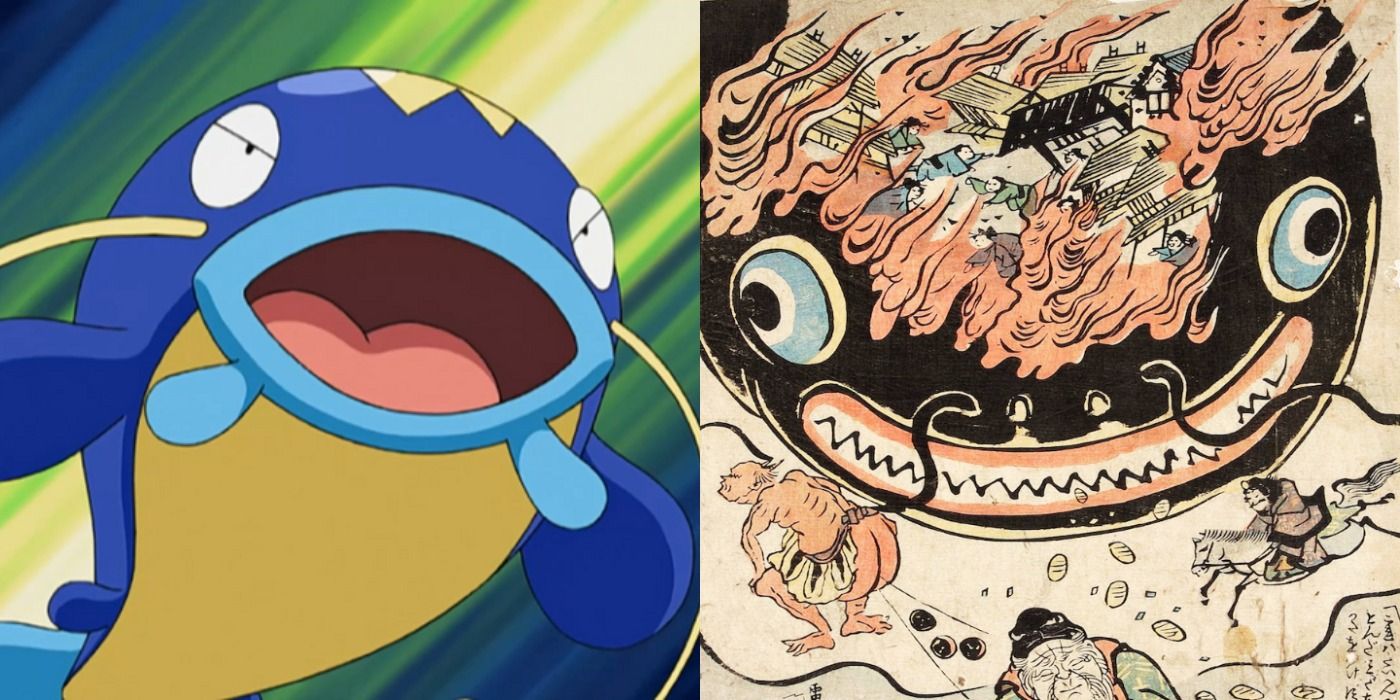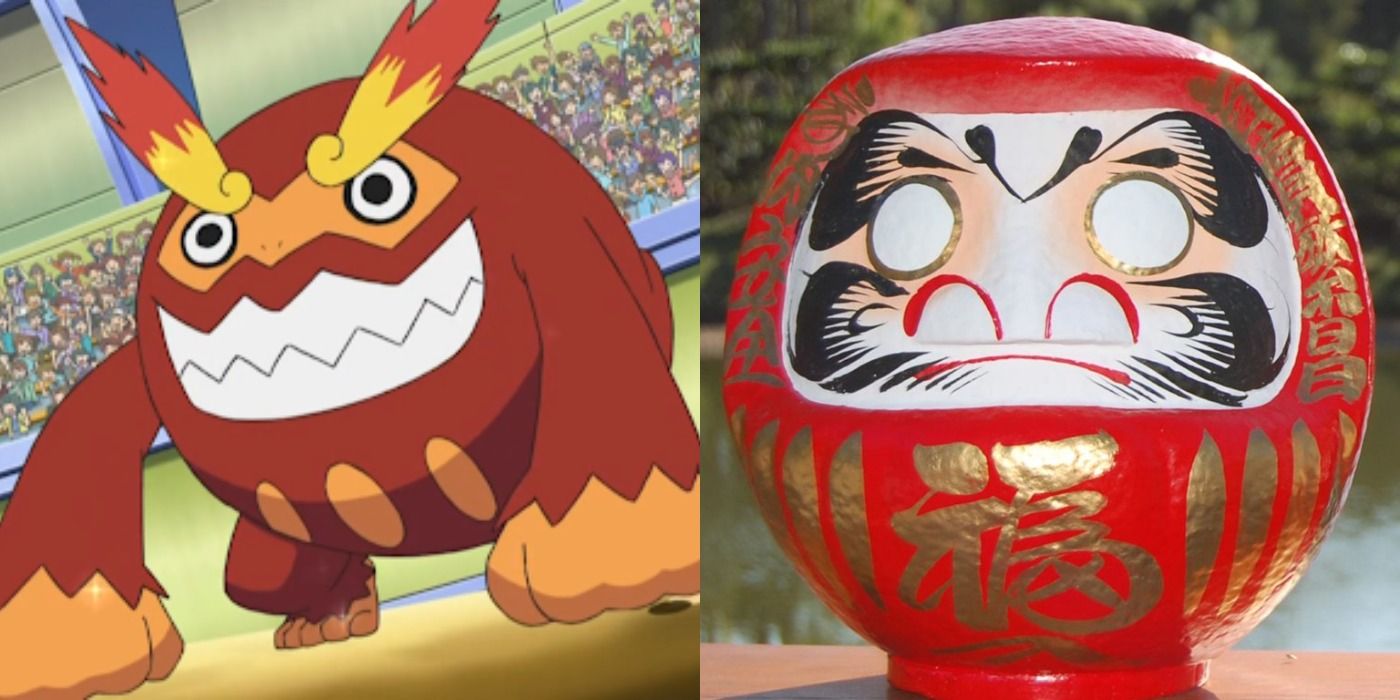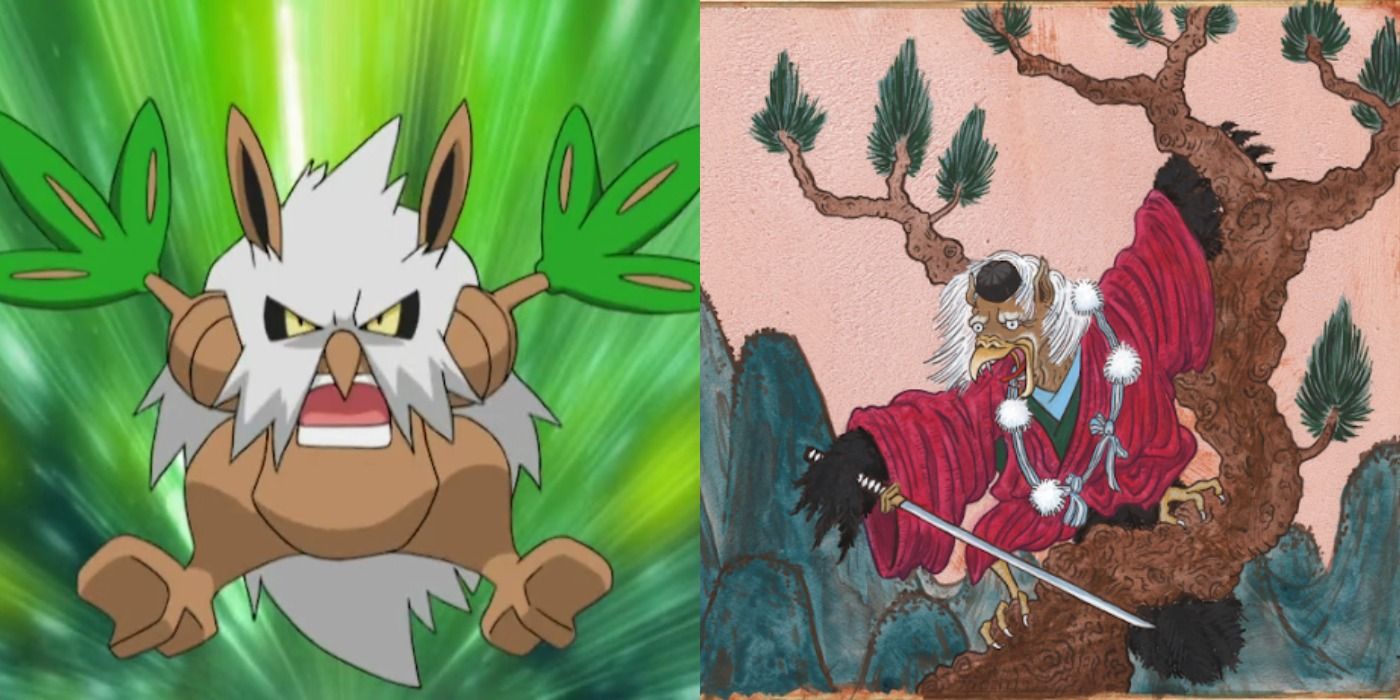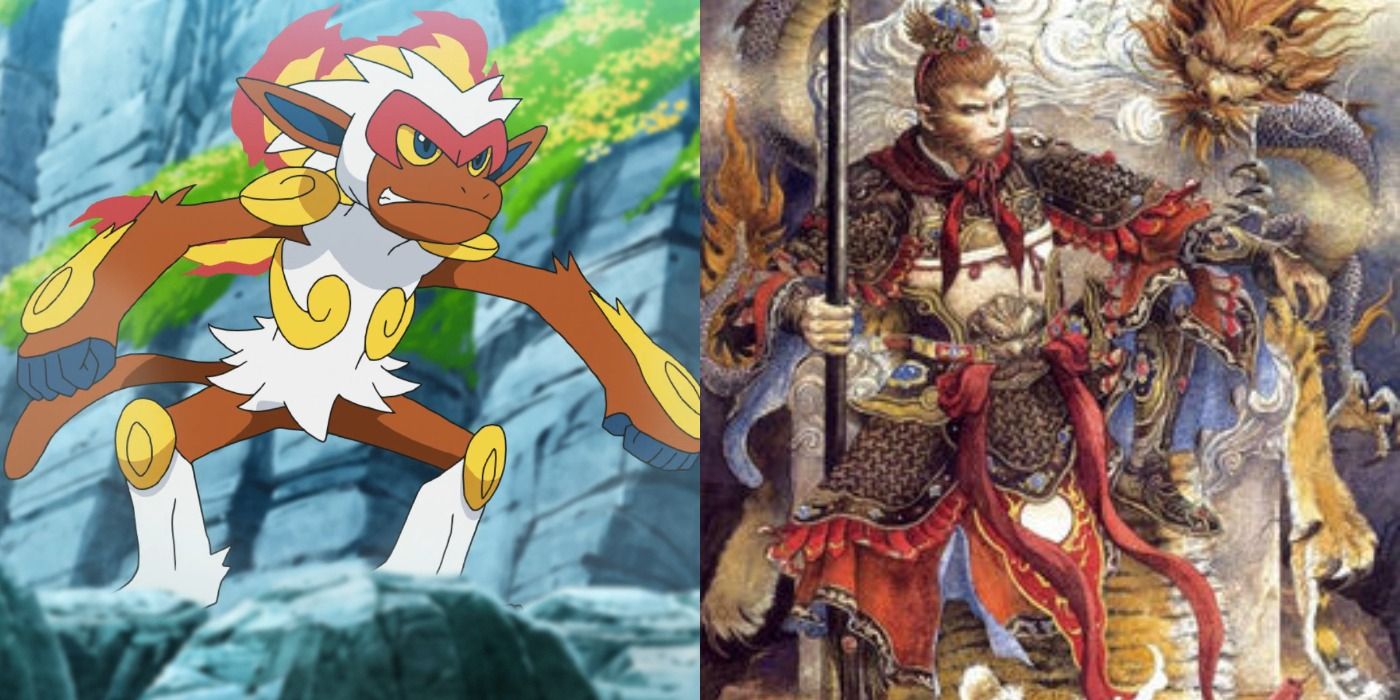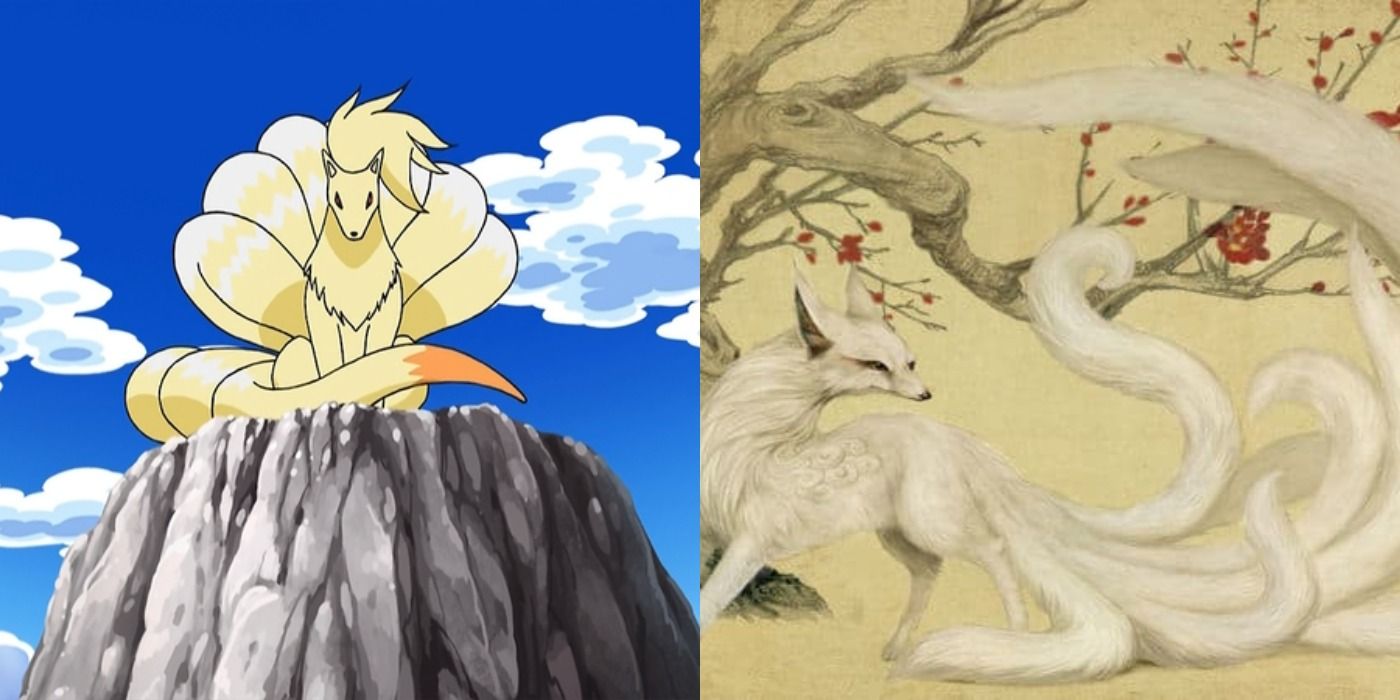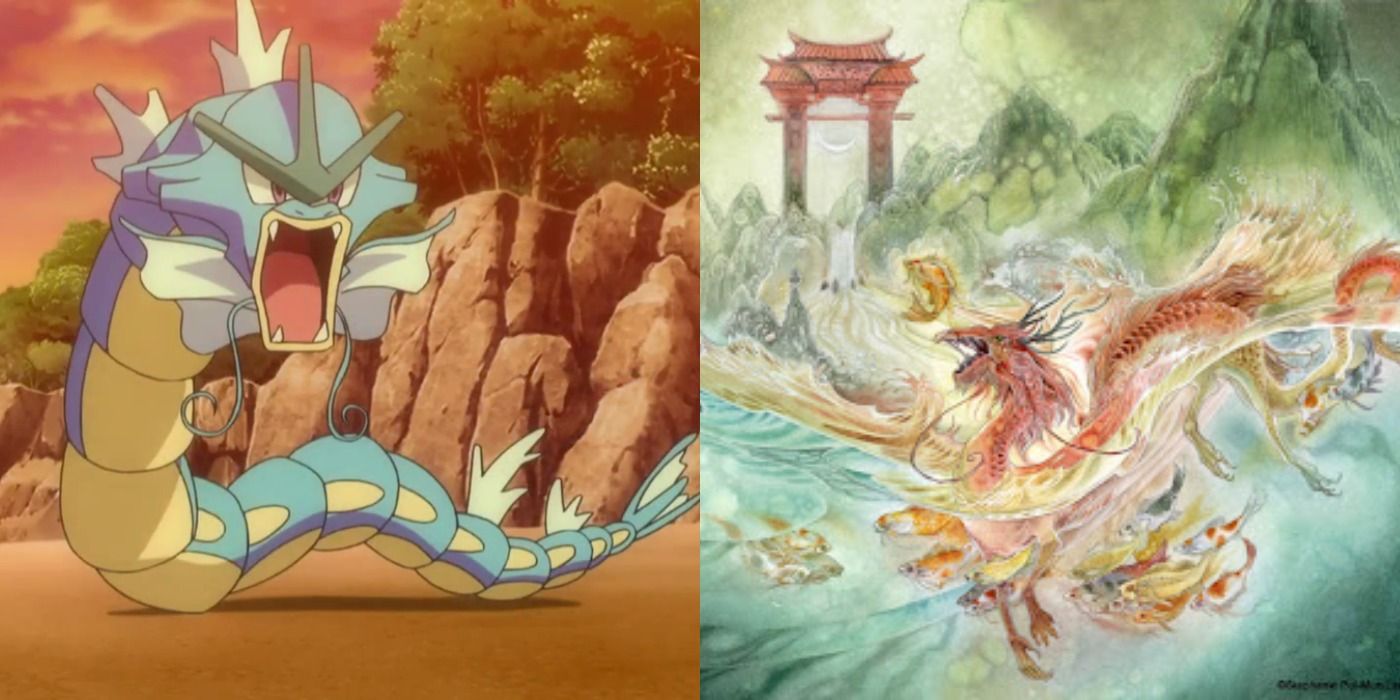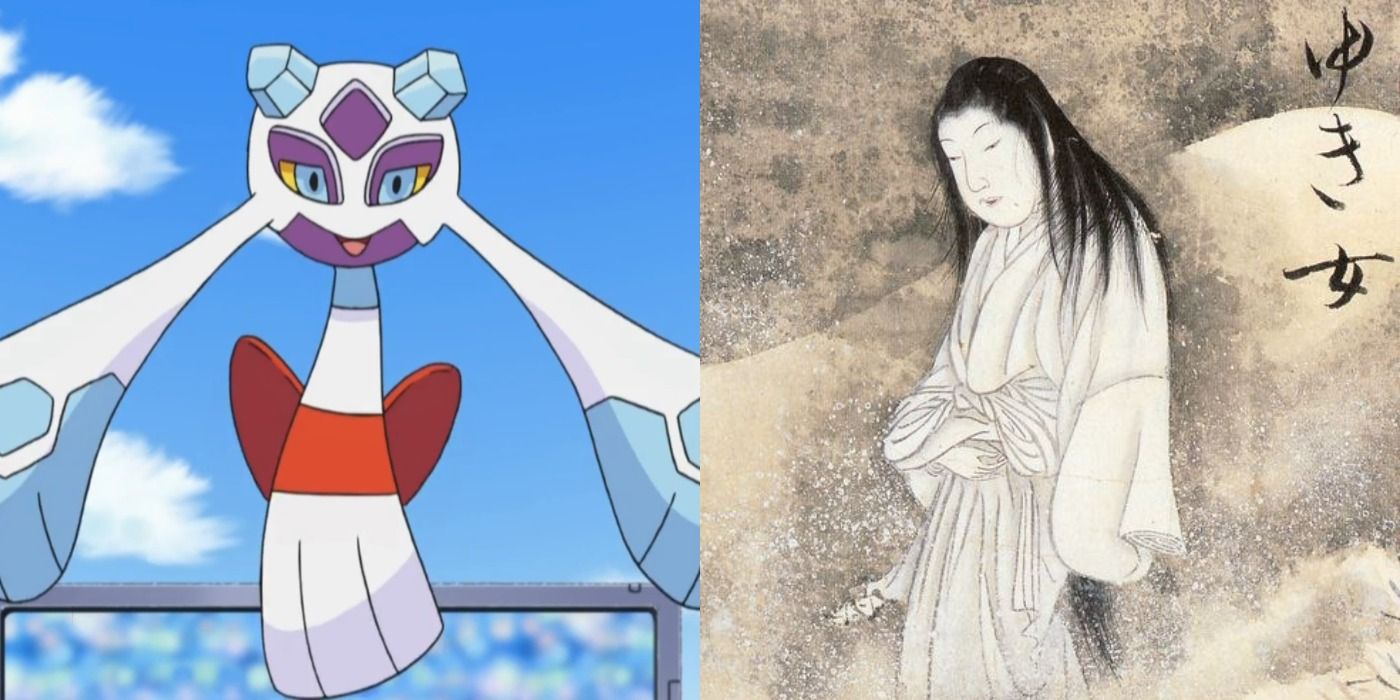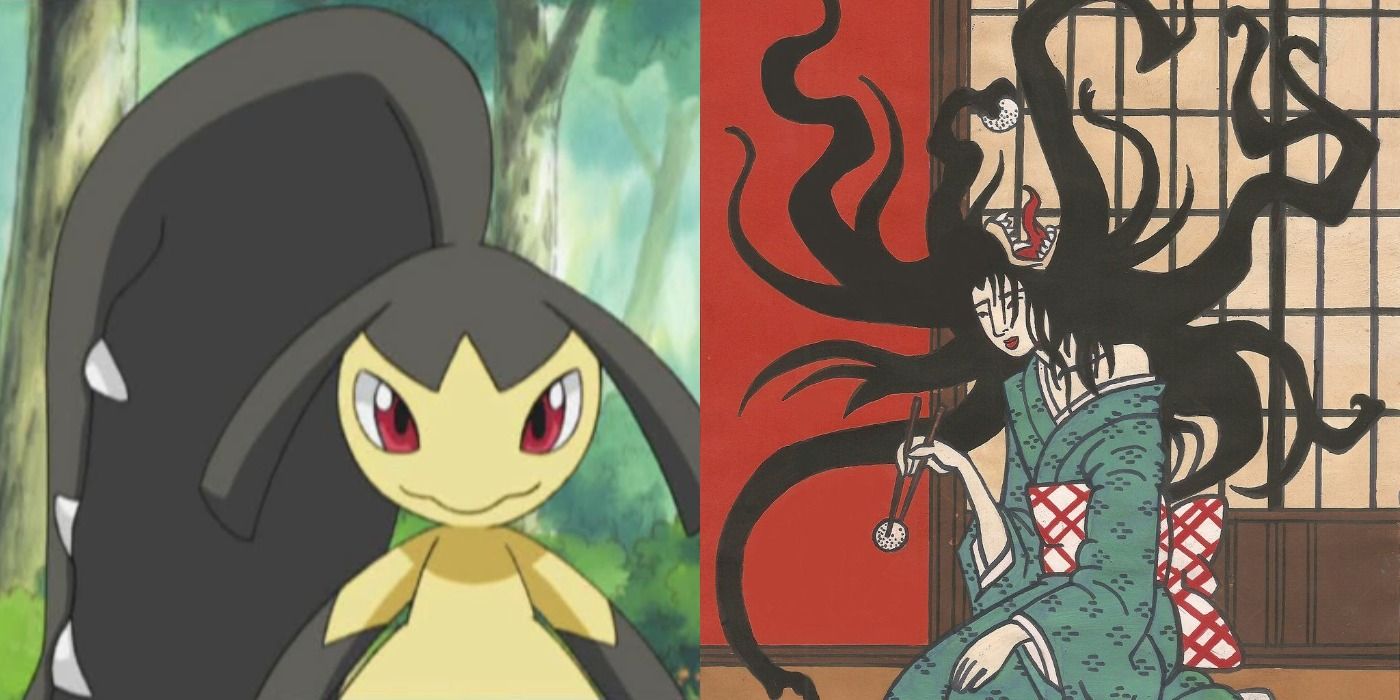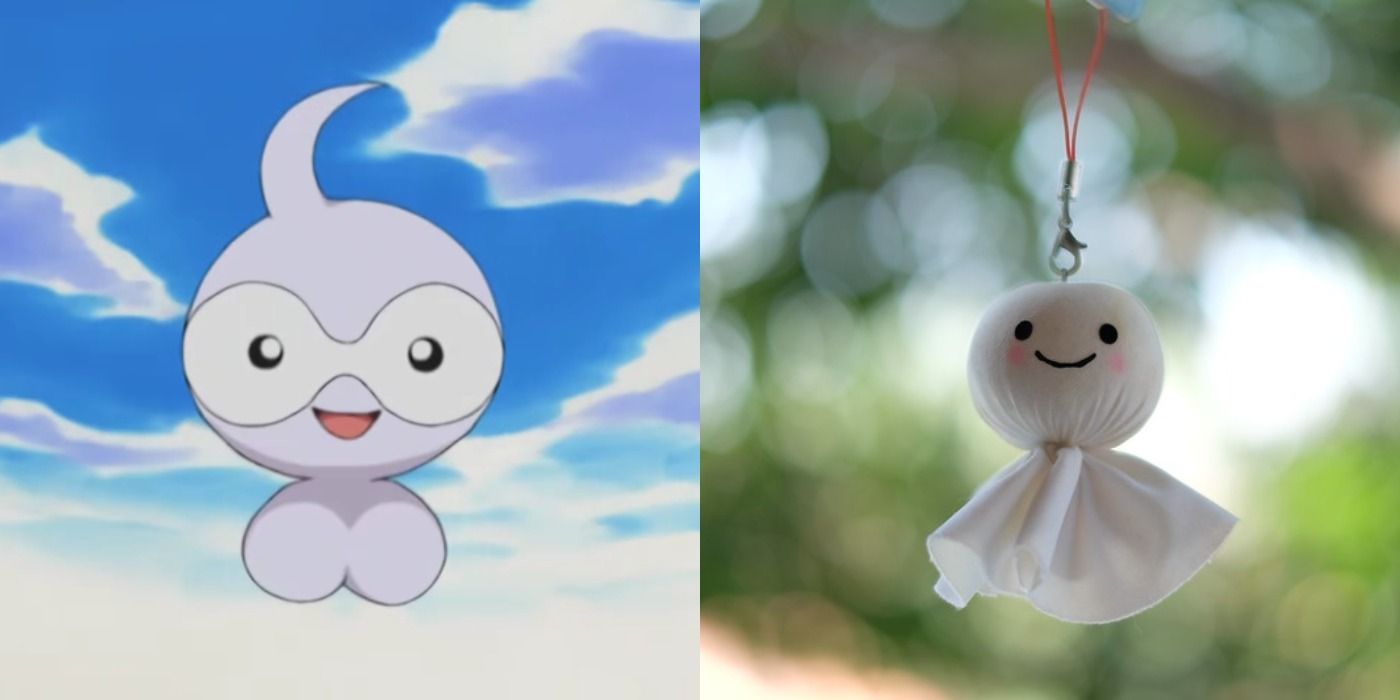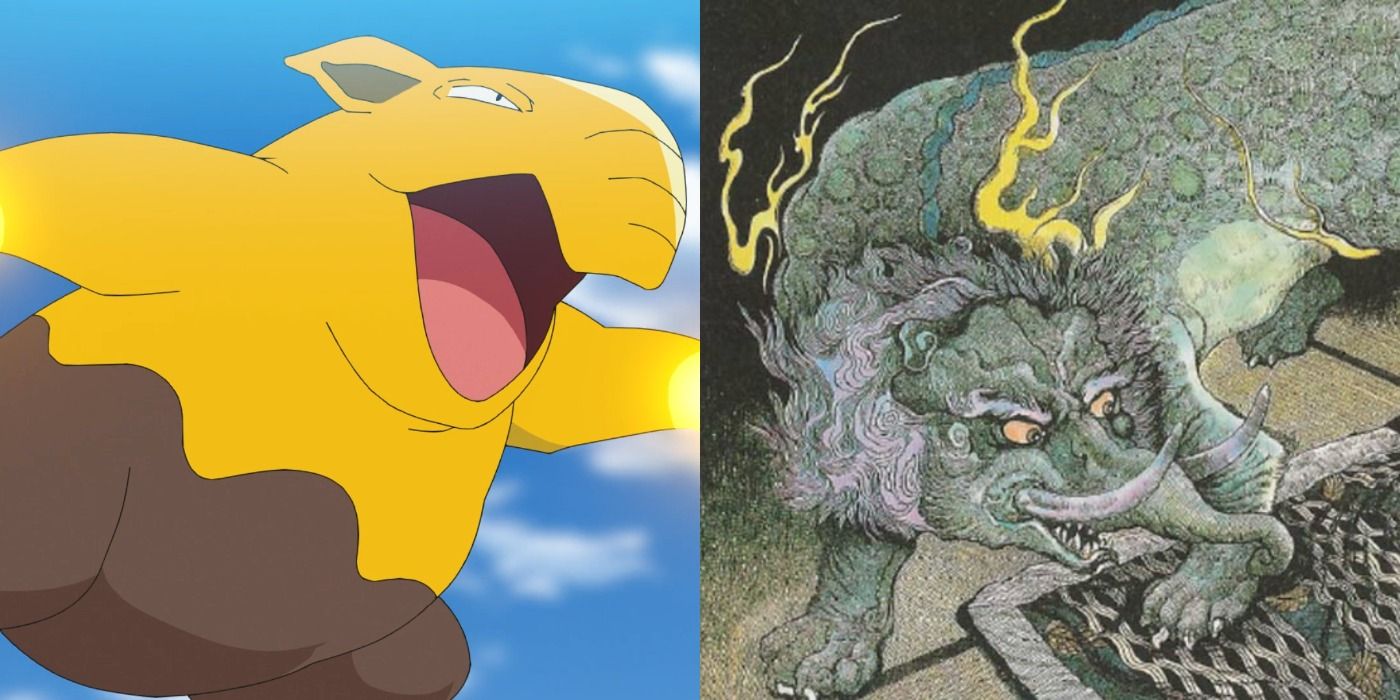With almost 1,000 pocket monsters currently existing in the series, Pokémon artists and designers have drawn inspiration for their designs from an incredibly wide array of sources. Given the Pokémon franchise's origins with creator Satoshi Tajiri's love for bug catching, it makes sense that real-world animal and plant life have inspired many of its characters.
Not all creatures in Pokémon come from such common backgrounds, though. A number of Pokémon from the game's eight generations reflecting various mystical beings from predominantly Asian mythology and folklore.
Whiscash - Namazu
At first glance, Whiscash, introduced in Pokémon Ruby and Sapphire, is a large, blue fish that closely resembles a catfish, and its dual water/ground typing seems inspired by catfish spending most of their time on lake and river floors. However, Whiscash's move set, including the powerful physical attack Earthquake, connects it to Nemazu of Japanese mythology. Nemazu, a giant catfish living underneath the islands of Japan, is eternally restrained by gods. When he's able to wiggle free, his movements are said to cause dangerous earthquakes around the country.
Darmanitan - Daruma Doll
Darmanitan's design inspirations are varied, including classic Zen Buddhist daruma dolls, orangutans, and the Buddhist quest for enlightenment. The monster's appearance bares heavy similarity to the small, round, red dolls often sold at temples to raise funds and impart good luck on their owners.
Once a year, these daruma dolls are brought back to the temple at which they were acquired for a burning ceremony, The old dolls are burned and new ones are purchased for the year to come. This practice is reflected by Damanitan's fire typing. Furthermore, once it enters Zen mode, the monster's pupils go solid white, reflecting the practice of Daruma dolls being sold with all-white eyes.
Shiftry - Tengu
In Japanese mythology, tengu are supernatural beings that blend human features and bird-like features. These yokai were originally thought to be creatures of evil, but as time progressed, some were also believed to be more benign protectors of forests and mountains. Shifty's face, sporting a long, slender nose, reflects the humanoid tengus' sleek, bird-like noses, and his dark/grass dual typing embodies both their protective and malicious nature. Furthermore, Shiftry's feet resemble Japanese geta sandals, and his leafy hands are shaped like the magical feather fans often carried by tengu to control the wind.
Infernape - Sun Wukong
Sun Wukong, also known as the Monkey King, is the main character of the epic Chinese story Journey to the West. This mythological being appears as a humanoid monkey with human-like posture, fur, and a monkey tail, and is an extremely competent fighter. Infernape, an iconic Pokémon that is one of Ash's strongest companions in the anime, has a visual design that mimics Sun Wukong. It appeara as a tall, humanoid monkey with regal gold accents garnishing its body. While the inspiration for the fire half of his typing isn't clear, the other half, fighting, may be a reference to either Sun Wukong's martial prowess or the monkey style of classic kung-fu.
Ninetales - Nine-Tailed Fox
Ninetales, the first-generationm fire-type Pokémon, makes its mythological inspiration clear with both its name and design. Ninetales is a fox-like monster that does indeed have nine fluffy tales, clearly representing the myth of magical, multi-tailed foxes present in multiple East Asian cultures. These fox spirits are said to grow more tails as they grow older, with the oldest and strongest attaining a full set of nine.
This is reflected in the Pokémon's evolution from Vulpix, which has only six tails, to its full-tailed final form. Furthermore, classic Japanese artwork also depicts foxes as being able to spew fire. While Ninetales may not reflect kitsunes' ability to shape-shift, its fire-typing makes sense.
Magikarp and Gyarados - Dragon Gate
Many fans of Pokémon Red and Blue were surprised when Magikarp, the worst combative Pokémon in the series, evolved into the incredibly strong Gyarados, one of the best Pokémon glow-ups in the franchise. While their physical appearances don't bare any resemblance to each other, the strange evolution is a reference to the classic Chinese story of the Dragon Gate. In this story, the Dragon Gate sits atop a waterfall, and any carp that are able to persevere through the climb and jump over the gate are rewarded by being turned into mighty dragons. This story is even more clearly referenced in the original Pokémon Snap, in which players could evolve Magikarp by knocking him into a waterfall.
Froslass - Yuki Onna
Snorunt is one of a small group of Pokémon that evolves into a different creature based on gender, with males growing into Glalie and females becoming Froslass. While Glalie resembles an angry snowball, Froslass' design is inspired by the Japanese yokai Yuki Onna. These chilling specters are snow ghosts that appear as young women wandering roads in the winter. They are said to attack and leave frozen anyone who approaches them.
Not only does Froslass' name mean "snow woman" in both English and Japanese, but its dual ice/ghost typing, female-only gendering, and kimono-shaped silhouette make its connection to Yuki Onna clear.
Mawile - Futakachi-Onna
While this third-generation Pokémon was originally released with a mundane typing and move pool, it's a Pokémon that developed much greater competitive viability over time with the addition of both a second typing (fairy) as well as a powerful Mega Evolution. This offensive powerhouse has a unique combat stance, with its head facing away from the fight and tooth-filled hair pointed towards its opponent. This unique design is reminiscent of the Japanese yokai Futakachi-Onna, a woman with prehensile hair and a second mouth in the back of her head. Mawile's Japanese name is also a combination of "mouth" and "eat," connecting to Futakachi-Onna's supposed strange eating habits.
Castform - Teru Teru Bozu
Castform is a unique Pokémon with the rare ability to transition between multiple different forms based on the weather, including forms for sun, rain, and snow. While each of these forms bears a clear design connection to relevant weather, Castform is oddly simplistic. While they partially resemble plain clouds, their large round heads and wavy bottoms more closely resemble Japanese teru teru bozu charms. These charms, made from balled up cloth or paper, are hung from trees or windows and are said to have magical powers to bring good weather.
Drowzee - Baku
In Japanese folklore, Baku are mystical creatures capable of eating people's dreams. These beings are often summoned by children to take away memories of bad dreams. Drowzee, arguably one of the most disturbing Pokémon of all time, has had a number of Pokédex entries in various games that either directly or indirectly support its connection to the Baku. These include an entry in Pokémon Stadium that says Drowzee is "said to have descended from the legendary beast, Baku." Drowzee was also one of the first Pokémon to have access to the move Dream Eater, and multiple Pokédex entries mention its preference for the dreams of children. Physically, Drowzee also sports a tapir-like snout, which is also present on Baku.

